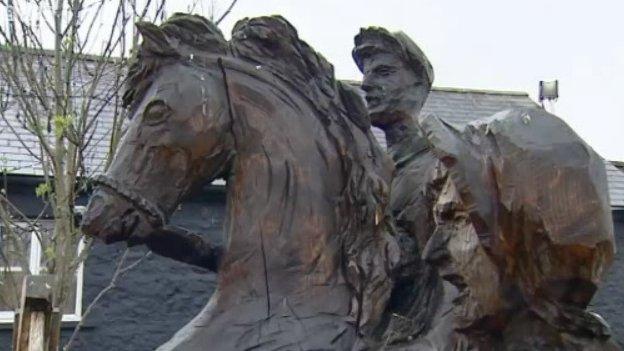Call to save Carmarthen workhouse from 'rack and ruin'
- Published
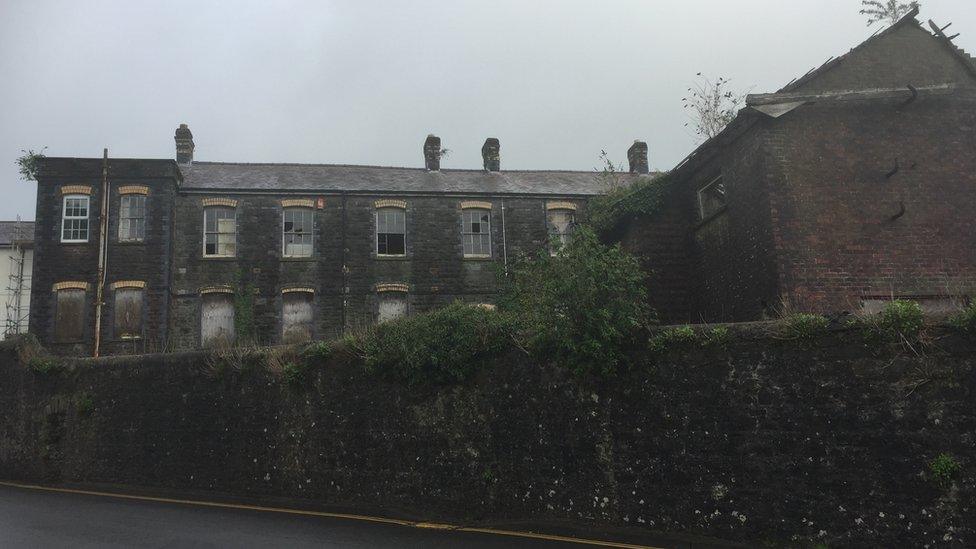
George Morgan is believed to be the building's architect
There are calls to save one of Carmarthenshire's most historic buildings from "rack and ruin".
The Carmarthen workhouse was built in the 1830s, and was stormed by protesters during the Rebecca Riots in 1843.
It has been on the market for some time with a current price tag of £199,999.
Carmarthen Civic Society wants the building returned to its former glory and turned into accommodation, office space or residential care.
The workhouse infirmary and boiler house were built on Penlan Road in response to the Poor Law Act 1834, which required each parish to look after its own poor residents.
Paupers were housed in workhouses and worked several hours a day in return for clothes and food.
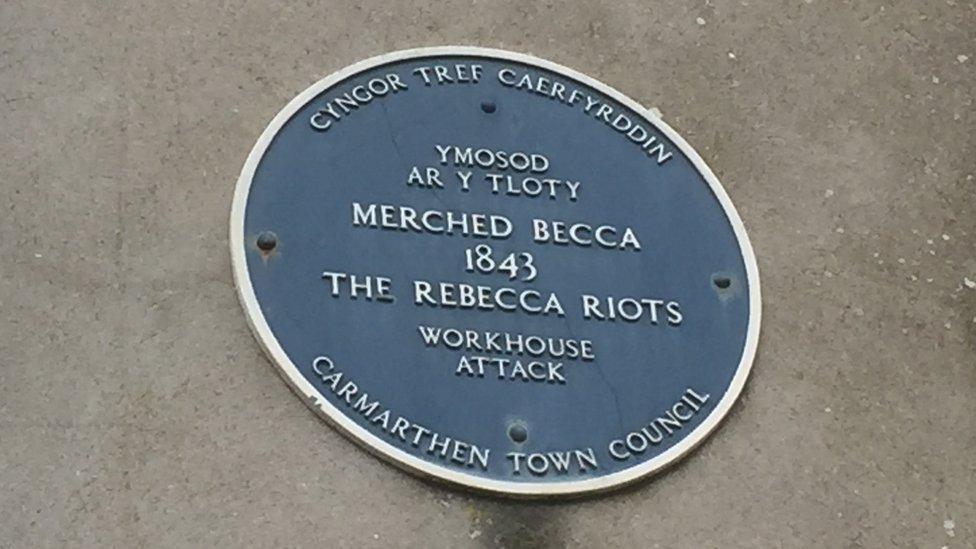
There were estimated to be about 3,000 protestors in Carmarthen during the riots
On 19 June 1843, the workhouse was stormed by Rebecca Rioters.
Mary Thorley, vice chairwoman of the civic society, explained there had been unrest in the area for years.
"It was known throughout the area that on the 19th of June there was going to be a march on Carmarthen," she said.
"The idea had been to request lesser fines for some of their numbers who had been in court, but somehow, whether it was the Carmarthen mob or the rioters, they turned their attention to the workhouse."
"They stormed the building and told the paupers they were going to free them," said Ms Thorley.
Anticipating the protest, The 4th Light Dragoons had made their way from Cardiff and were seen coming up the road with their swords drawn.
The rioters dispersed and some were arrested.
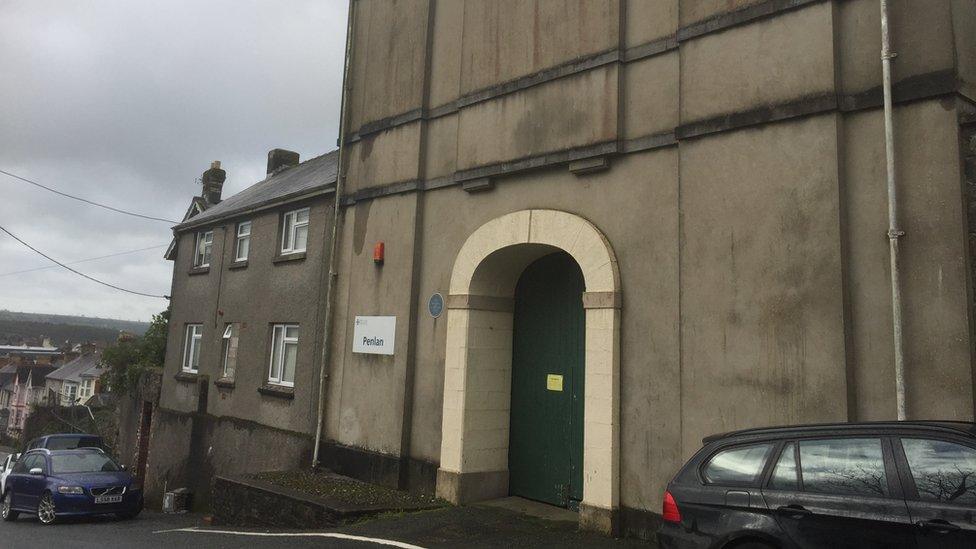
Ms Jones said the building had become a health and safety concern with broken glass and rubbish
The building continued to be used as a workhouse until the 1930s, and was more recently used as offices for the BBC and Carmarthenshire council.
Linda Jones, chairwoman of the civic society, said it was "such a shame to see a lovely building going to rack and ruin".
She said it could be turned into accommodation or residential care, for which she said there was a demand.
There is a plaque to mark the workhouse attack, but Ms Thorley believes there should be more of a tribute, describing the Rebecca Riots as "one of the most important social events in Welsh history", similar to one in St Clears.
"It was the 1840s and people were just beginning to realise that, actually, their lives were important. They had things to say and they had rights too," added Ms Thorley.
"It wasn't just about land owners and people in power."
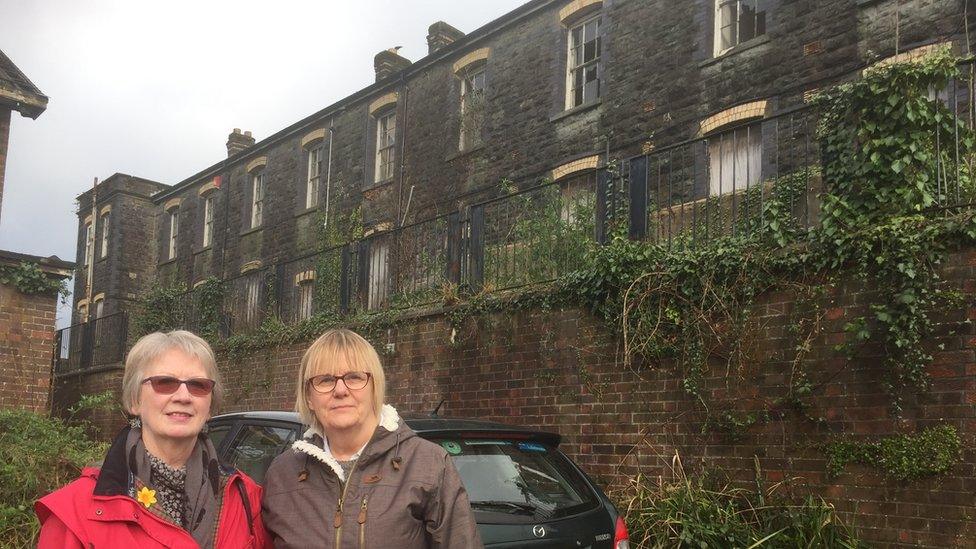
Mary Thorley and Linda Jones want the building returned to its former glory
- Published2 December 2016
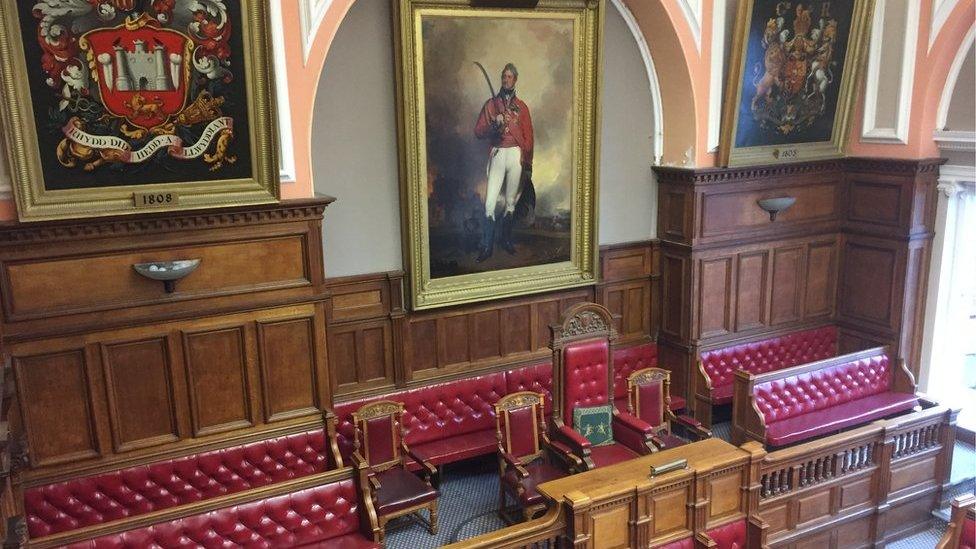
- Published27 May 2016
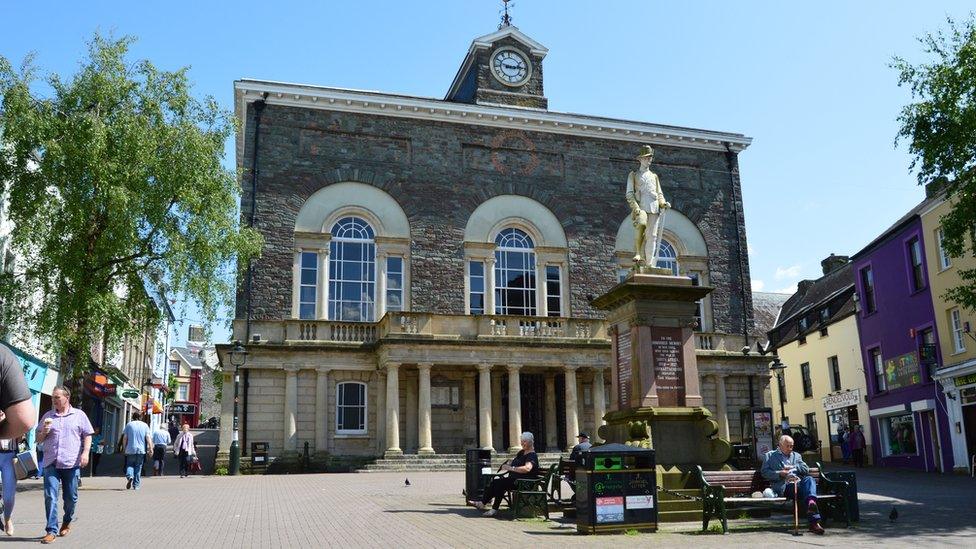
- Published13 May 2014
